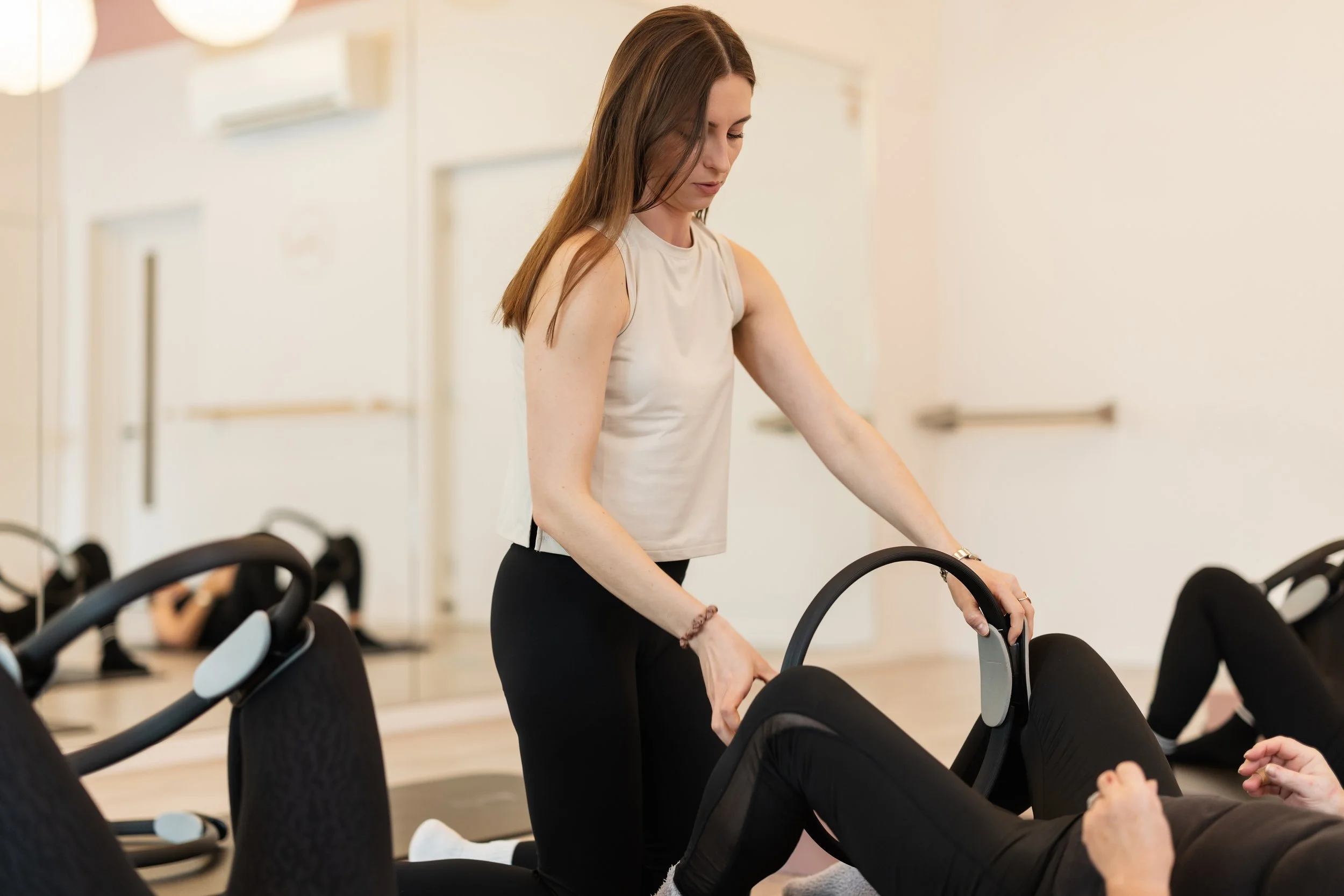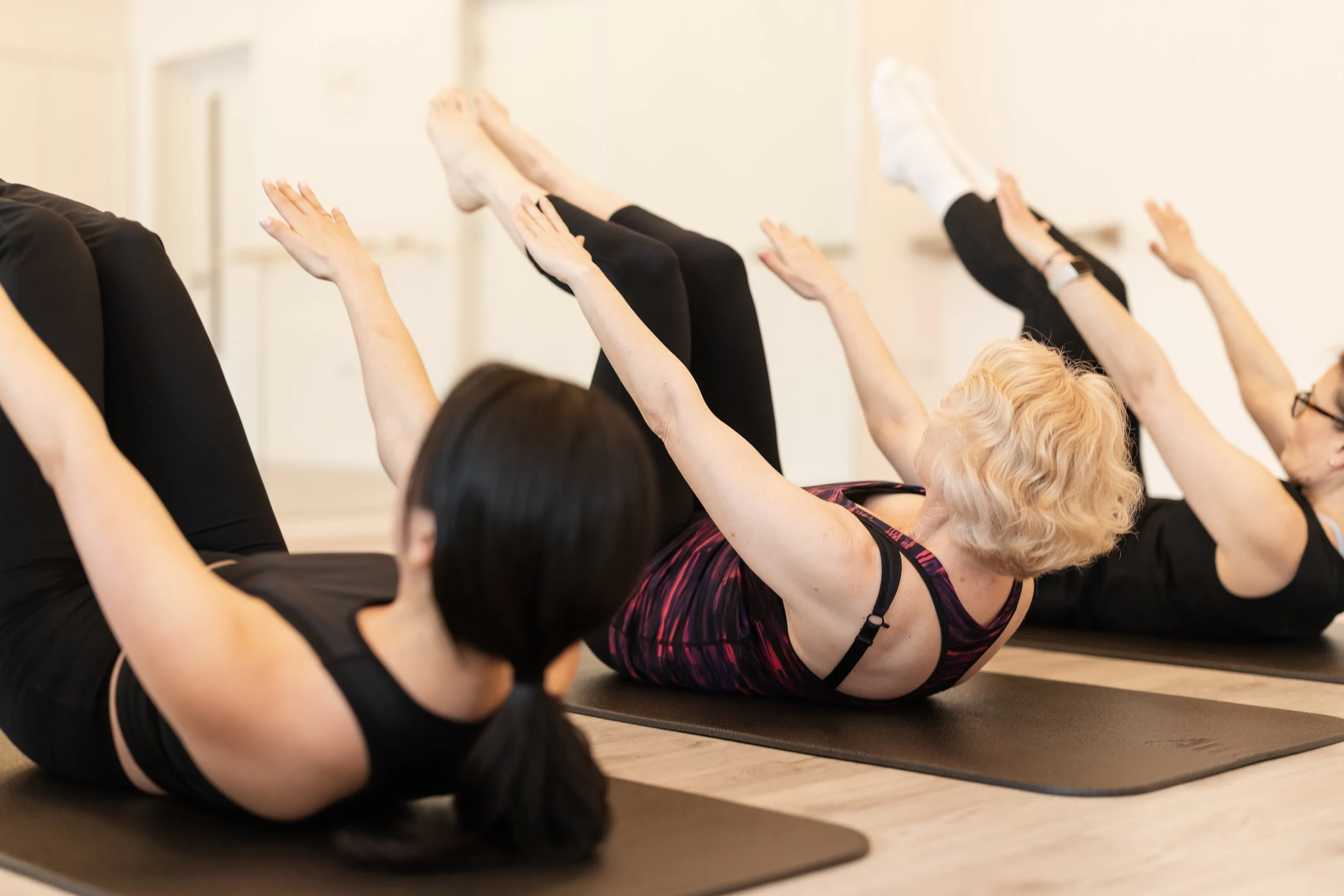Mat vs. Reformer Pilates: Which One is Right for You?
Pilates has exploded in popularity, and with so many styles and pieces of equipment, it can be tough to know where to start. My background is in neurorehabilitation, and my training is focused on mat and reformer Pilates (so my opinions here won't cover every piece of equipment out there!).
To help you decide, let's break down the main differences between the two most popular styles and see which one aligns best with your goals.
Classical vs. Contemporary: Understanding the Styles
Before diving into the equipment, it helps to understand the two main philosophical camps:
Classical Pilates: Aims to stay as close as possible to Joseph Pilates' original system, sequence, and exercises.
Contemporary Pilates: Adapts the exercises based on current research in rehabilitation, biomechanics, and fitness interests.
There's no right or wrong choice—it all comes down to what you're looking for. The most important thing is that your teachers are well-trained and fully capable. Always check their qualifications and background. Don't be afraid to ask about their experience—it will either give you reassurance or allow you to walk away if you have doubts.
Choosing Your Focus: Goals & Equipment
Both mat and reformer Pilates work on the core principles: breathing, alignment, and posture. You can get excellent results from either, but one might give you an edge depending on your specific goal.
For Toning & Burning Fat
Both are great, but here's how to choose your starting point:
If you're a beginner, start with Mat Pilates. It’s the essential foundation. It teaches you the principles of alignment, breathing, and how to connect with your deep core muscles without the complexity of the machine.
The Reformer will make your muscles work harder with its additional spring resistance. The feedback from the machine's moving carriage also helps to improve your alignment and precision quickly.
Whatever it is, the way you tell your story online can make all the difference.
For Building Muscle Strength
The Reformer is a powerhouse here. It allows you to focus on building muscle strength and endurance with added loads (the springs). It also has a fantastic repertoire for building back and shoulder strength that can be incredibly challenging.
However, don't discount the Mat! Our mat-based classes with weights or a resistance band are great fun, and the advantage is that you can do them anywhere, transitioning quickly and seamlessly from one exercise to another.
For Improving Flexibility
Mat Pilates is more versatile for improving flexibility.
It allows you to transition seamlessly between positions, helping you maintain focus and connect more effectively with your mind and breath.
You use your own body weight and resistance, or can be supported by small equipment like a ball or a band. It's easier to modify and adjust moves to suit your unique range of motion.
The Reformer can take your flexibility to another level if you already have excellent body awareness by allowing you to play with spring resistance—it's why you often see dancers incorporate it into their routine.
Special Considerations: Age, Injury, and Lifestyle
For Seniors
Both types can be great, but it’s crucial to understand the pros and cons for this group:
Reformer (Pros)
Elevated height is helpful for those who struggle with getting on and off the floor.
Great for building strength and endurance.
Reduced gravity while lying down helps with joint issues.
Machine feedback is highly beneficial for mind-body connection.
Reformer (Cons)
Can be intense
High concentration and coordination are needed for the moving carriage.
Added resistance can lead to gripping and clenching if not done correctly.
Challenging or intimidating to get on and off for people with back, hip, or knee issues.
Good hearing is essential for safety due to the need for immediate response to instructions.
Mat is Safer for Beginners with Mobility or Hearing Issues: It's easier to modify exercises, correct alignment, and has no extra resistance, which is better if concentration or endurance is failing. Working on standing balance is also safer on the mat with support props.
For Women Aged 40+
Both are excellent for building muscle and improving flexibility.
If you have no joint issues, I would opt for the Reformer for its added resistance.
If you have joint issues like carpal tunnel or neck pain, I’d recommend a Mat-based option. The Reformer often places a lot of emphasis on the shoulders and wrists, which could make these issues worse.
As a woman in my 40s, I love the combination of both: Mat Pilates offers freedom of movement, and the Reformer requires more precise and challenging moves.
For Runners/Cardio Enthusiasts
I recommend more Mat classes to incorporate essential stretching, balance, and ankle work into your routine. On the Reformer, you can use the jumpboard to work on your gait and alignment. The key is to focus on injury prevention and the mind-body connection.
For Pregnancy and Postnatal
Mat Pilates is definitely easier for making modifications. While the Reformer has great exercises for pregnancy, a combination of mat and Swiss ball classes is far more supportive of a person's changing needs, especially in the later stages of pregnancy.
Final Thoughts on Safety and Cost
Start with the Fundamentals: Always begin with a beginner or intermediate Mat class or a few one-on-one sessions to ensure you learn the exercises correctly.
Injury & Rehabilitation: The Reformer is excellent for rehabilitation in a one-on-one setting, but I would suggest starting with the Mat after an initial assessment to build rapport and ensure movements are safe.
Cost and Safety: Mat Pilates is more affordable and allows you to practise at home without bulky equipment. Be aware of the dangers of using cheap reformers, as there have been many reported injuries in the US and Australia, and the number is rising in the UK. If you choose the Reformer, pay more for a qualified teacher and a good-quality machine and choose smaller class sizes (I safely teach no more than six to eight people per class).
Ultimately, the best type of Pilates for you depends on your goals and personal preference. Both are excellent for building resistance, strength, and flexibility while improving your posture.
What are your fitness goals? Have you tried Mat or Reformer Pilates before, and what was your experience?



